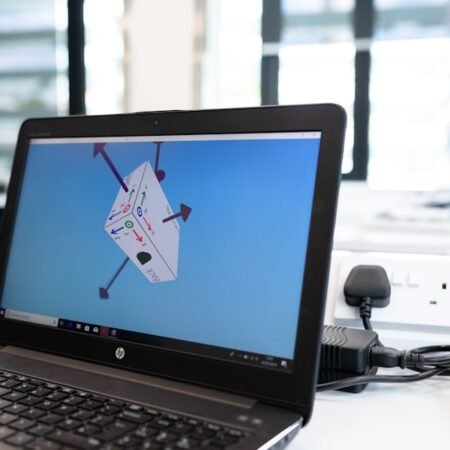In the modern digital landscape, Wi-Fi security has become a top priority as an increasing number of individuals rely on wireless networks for internet access. Grasping the fundamentals of Wi-Fi security is essential for protecting sensitive information and preventing unauthorized access to networks. Wi-Fi security involves a range of measures and protocols aimed at shielding wireless networks from potential threats, including unauthorized access, data interception, and network exploitation.
By gaining proficiency in Wi-Fi security, individuals and organizations can ensure the confidentiality, integrity, and availability of their wireless networks. Aircrack-ng is a powerful tool for mastering Wi-Fi security, offering a comprehensive suite of tools designed to assess the security of Wi-Fi networks. Widely utilized by security professionals and hackers, Aircrack-ng is used to test the security of wireless networks and identify potential vulnerabilities.
With its capability to crack WEP and WPA-PSK keys, Aircrack-ng is a valuable resource for anyone seeking to enhance their understanding of Wi-Fi security and fortify the defenses of their wireless networks.
Key Takeaways
- Wi-Fi security is crucial for protecting personal and business data from unauthorized access and attacks.
- Aircrack-ng is a powerful tool for testing and securing Wi-Fi networks, and it is important for beginners to understand its capabilities and limitations.
- Setting up Aircrack-ng for Wi-Fi security requires a compatible Wi-Fi adapter and the installation of the Aircrack-ng suite.
- Basic Wi-Fi security attacks include packet sniffing, deauthentication attacks, and brute force attacks, while defenses include strong encryption and MAC address filtering.
- Advanced Wi-Fi security techniques with Aircrack-ng include WPA/WPA2 cracking, capturing WPA handshakes, and using rainbow tables for password cracking.
Introduction to Aircrack-ng
Compatibility and Accessibility
Aircrack-ng is compatible with most Wi-Fi adapters and supports a variety of operating systems, making it accessible to a wide audience of users.
Main Components and Capabilities
The main components of Aircrack-ng include Airodump-ng, which is used for packet capturing and network monitoring; Aireplay-ng, which is used for packet injection and replay attacks; and Aircrack-ng, which is used for cracking WEP and WPA-PSK keys. These tools work together to provide a comprehensive solution for assessing and securing Wi-Fi networks.
Benefits and Applications
By familiarizing yourself with the capabilities of Aircrack-ng, you can gain valuable insights into the vulnerabilities of wireless networks and develop effective strategies for mitigating potential security risks.
Setting Up Aircrack-ng for Wi-Fi Security
Setting up Aircrack-ng for Wi-Fi security requires a basic understanding of networking concepts and familiarity with the Linux operating system. Aircrack-ng is primarily designed for use on Linux-based systems, although it can also be used on Windows and macOS with the help of third-party tools and drivers. To get started with Aircrack-ng, you will need to install the suite of tools on your preferred operating system and ensure that you have a compatible Wi-Fi adapter that supports packet injection and monitor mode.
Once you have installed Aircrack-ng and configured your Wi-Fi adapter for packet injection and monitor mode, you can begin using the suite of tools to assess the security of wireless networks. Airodump-ng can be used to capture packets from nearby Wi-Fi networks, while Aireplay-ng can be used to inject packets into a target network to test its resilience against various attacks. Aircrack-ng can then be used to crack WEP and WPA-PSK keys by analyzing captured packets and performing brute-force attacks.
By following the proper setup procedures for Aircrack-ng, you can effectively leverage its capabilities for enhancing the security of your Wi-Fi networks.
Basic Wi-Fi Security Attacks and Defenses
Wi-Fi networks are susceptible to a variety of basic security attacks, such as eavesdropping, unauthorized access, and denial-of-service attacks. Eavesdropping involves intercepting and monitoring wireless communications to obtain sensitive information, while unauthorized access involves gaining entry to a wireless network without proper authorization. Denial-of-service attacks disrupt the normal operation of a wireless network by flooding it with an excessive amount of traffic or by exploiting vulnerabilities in its infrastructure.
To defend against these basic Wi-Fi security attacks, it is important to implement strong encryption protocols, such as WPA2-PSK or WPA3-PSK, and to use complex passwords that are resistant to brute-force attacks. Additionally, enabling MAC address filtering and disabling SSID broadcasting can help prevent unauthorized access to a wireless network. Network segmentation and isolation can also be used to mitigate the impact of denial-of-service attacks by containing their effects within specific network segments.
By understanding the basic Wi-Fi security attacks and implementing appropriate defenses, you can significantly reduce the risk of unauthorized access and data interception on your wireless networks.
Advanced Wi-Fi Security Techniques with Aircrack-ng
In addition to basic Wi-Fi security attacks and defenses, Aircrack-ng can be used to perform advanced techniques for assessing and securing wireless networks. For example, Aircrack-ng can be used to conduct man-in-the-middle attacks by intercepting and modifying wireless communications between clients and access points. This can be achieved using tools such as ARP poisoning and DNS spoofing to redirect traffic through an attacker-controlled device.
Aircrack-ng can also be used to perform rogue access point attacks by creating fake wireless networks that mimic legitimate access points. This can be used to trick unsuspecting users into connecting to a malicious network, allowing attackers to intercept their communications and steal sensitive information. By understanding these advanced Wi-Fi security techniques, you can develop effective countermeasures to protect your wireless networks from potential threats.
Implementing strong encryption protocols, using secure authentication methods, and regularly monitoring network traffic are essential practices for defending against advanced Wi-Fi security attacks.
Best Practices for Securing Wi-Fi Networks
Encryption and Password Security
Using strong encryption protocols, such as WPA2-PSK or WPA3-PSK, is essential to protect wireless communications from eavesdropping and data interception. Additionally, using complex passwords that are resistant to brute-force attacks and regularly updating them can prevent unauthorized access.
Network Access Control
Enabling MAC address filtering and disabling SSID broadcasting can help prevent unauthorized access to a wireless network. By restricting the devices that are allowed to connect and hiding the network from public view, you can add an extra layer of security to your Wi-Fi network.
Monitoring and Assessment
Regularly monitoring network traffic and performing periodic security assessments using tools like Aircrack-ng can help identify potential vulnerabilities and mitigate security risks before they are exploited by attackers. This proactive approach can significantly enhance the resilience of your wireless infrastructure against potential threats.
Resources for Further Learning and Practice
For those looking to further their understanding of Wi-Fi security and practice using Aircrack-ng, there are numerous resources available online that provide in-depth tutorials, guides, and documentation. The official Aircrack-ng website offers comprehensive documentation and user guides that cover the installation, configuration, and usage of the suite of tools. Additionally, there are numerous online forums and communities dedicated to Wi-Fi security and penetration testing that provide valuable insights and support for individuals looking to enhance their skills in this field.
Furthermore, there are several online platforms that offer hands-on labs and virtual environments for practicing Wi-Fi security techniques using Aircrack-ng in a safe and controlled setting. These platforms provide realistic scenarios for testing the security of wireless networks and allow users to gain practical experience in identifying vulnerabilities and implementing effective countermeasures. By leveraging these resources for further learning and practice, individuals can develop their expertise in Wi-Fi security and become proficient in using Aircrack-ng for securing wireless networks.
In conclusion, mastering Wi-Fi security with Aircrack-ng requires a comprehensive understanding of the basics of Wi-Fi security, familiarity with the capabilities of Aircrack-ng, and adherence to best practices for securing wireless networks. By following the guidelines outlined in this comprehensive guide for beginners, individuals can enhance their knowledge of Wi-Fi security and develop effective strategies for protecting their wireless infrastructure from potential threats. With the right tools, techniques, and resources at their disposal, individuals can gain valuable insights into the vulnerabilities of wireless networks and strengthen their defenses against potential attacks.
By mastering Wi-Fi security with Aircrack-ng, individuals can ensure the confidentiality, integrity, and availability of their wireless networks in today’s digital age.
FAQs
What is Aircrack-ng?
Aircrack-ng is a network software suite consisting of a detector, packet sniffer, WEP and WPA/WPA2-PSK cracker, and analysis tool for 802.11 wireless LANs. It is used for testing the security of Wi-Fi networks.
What is Wi-Fi security?
Wi-Fi security refers to the measures and protocols put in place to protect wireless networks from unauthorized access and potential security threats. This includes encryption, authentication, and other security mechanisms to ensure the confidentiality and integrity of data transmitted over Wi-Fi networks.
What is WEP and WPA/WPA2-PSK?
WEP (Wired Equivalent Privacy) and WPA/WPA2-PSK (Wi-Fi Protected Access) are different encryption protocols used to secure Wi-Fi networks. WEP is an older and less secure protocol, while WPA/WPA2-PSK are more advanced and widely used for securing Wi-Fi networks.
What is Aircrack-ng used for?
Aircrack-ng is used for testing the security of Wi-Fi networks by attempting to crack the encryption keys used to secure the network. It can be used to assess the strength of a network’s security and identify potential vulnerabilities.
Is Aircrack-ng legal to use?
Aircrack-ng is a legal tool when used for ethical and legal purposes, such as testing the security of your own Wi-Fi network or with explicit permission from the owner of the network being tested. However, using Aircrack-ng for unauthorized access to Wi-Fi networks is illegal and unethical.










